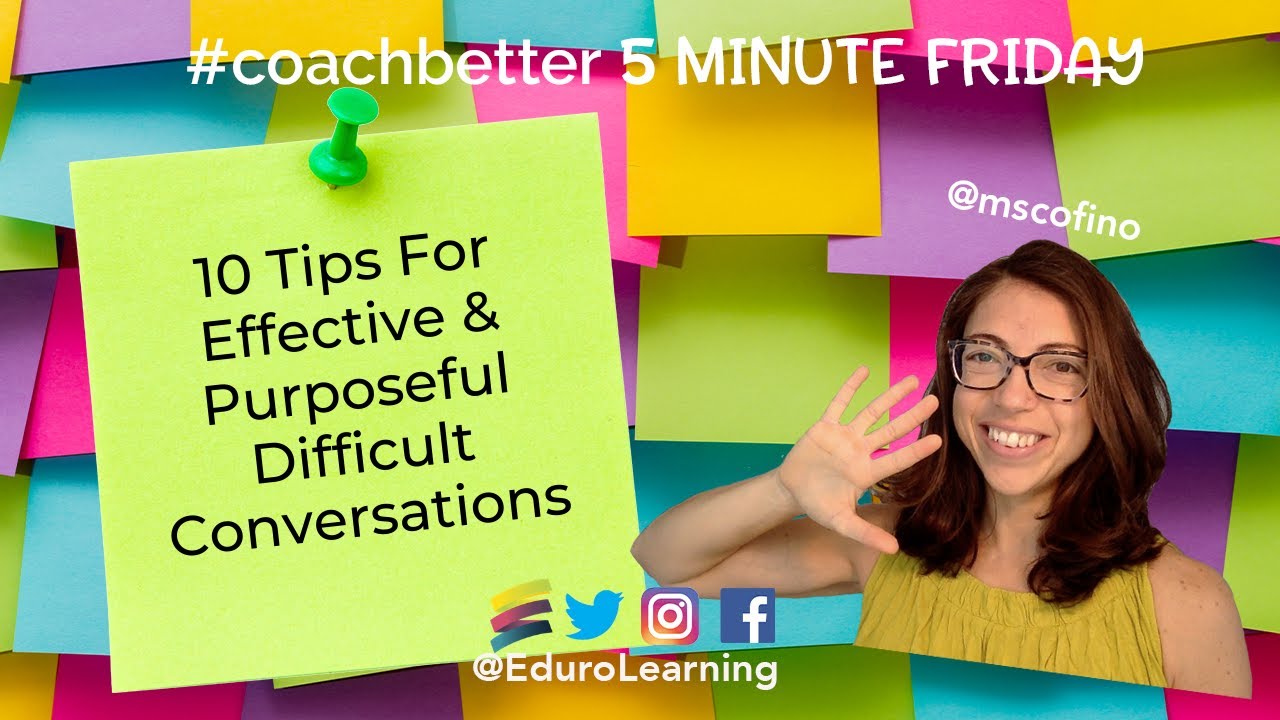As instructional coaches and leaders in our schools, we are often tasked with having direct conversations with our colleagues. Often times, those can feel like “difficult” conversations even when they might not actually have to be difficult. As educators, we don’t often get trained in handling difficult conversations or confrontational issues with our colleagues and it can feel scary or intimidating, especially the first time, but it doesn’t have to be that way!
Over the last year, I conducted over 70 interviews with successful women leaders in the education sector, all around the world for our Women Who Lead certificate program. One of the questions I asked them is what have they learned about handling confrontation over the course of their career. I was interested to discover that there was some really consistent messaging that came through in those conversations that connected with my own personal experience and really resonated with me. So I wanted to share that with you today!
It’s important to feel confident in being able to have these kinds of conversations. It is a critical leadership skill that will serve you in all aspects of your professional and possibly your personal life. Being better at handling difficult conversations is something we should all work towards. In today’s post, I’m sharing 10 tips for successful difficult conversations, and I’ve organized them into three sections.
Preparing for the Conversation
Preparing for this conversation is often something that we don’t always put enough effort into. It’s really valuable to take some time, to actually prepare, to have a successful conversation. Some of the things that could be helpful for you are:
1:: Write down what you want to say
You might discover when you write it down, that it’s actually a lot more words than you thought. And the words you were planning to use actually carry more emotion than you thought. If you just rehearse it in your head It’s part of the voice in your head and it sounds natural and flowy and easy, but if you write it down and look at it, you can actually see opportunities to revise and simplify and clarify exactly what you plan to say.
2:: Practice or rehearse
Maybe you feel the most comfortable doing this in a mirror, or maybe you want to record so you can watch it back, or maybe you want to practice with a colleague. In my women who lead interviews, many women suggested rehearsing or practicing this conversation with a colleague.
I particularly appreciated Jen Tickles’ perspective in the Women Who Lead interviews. As a former theater director, she talked about acting it out, and getting that colleague really “be” the other person in this conversation. So you are prepared to deal with any possible outcome to anything you might say. The key is you don’t want the first time that you’re having this conversation with this person to be the first time you’re having this conversation – ever. You want to have gone over it, not just in your head, but in practice. So you really get comfortable with all the movements you might make, the words you might choose, the way you might sit, the place you might choose, what you might wear. So you’re really ready for this conversation.
3:: Find a Neutral Location
If there’s a spot on campus that you can have a conversation that isn’t your room or their room, that’s really great. If that’s not possible, at least, can you make it a little more neutral by sitting on the same side of the table and thinking about actually setting aside enough time to have this conversation. So you can talk for 15 or 20 minutes and actually have a conversation. It’s not something you want to catch somebody in the hallway and try to talk about
4:: Choose Simple Language
Not only the simplest language possible, but also with the least amount of words. I think we’re really used to writing report card comments and softening our feedback and being really sensitive to the other person’s emotions in almost every aspect of our teaching roles. But when it is a difficult conversation, we need to really cut to the chase and be clear.
When you’re thinking about the location, you might also want to consider:
- Does someone else need to observe this conversation? Whether for the other person, or for you, so that you feel like you have a neutral pair of eyes in the room.
- What kind of documentation are you going to take?
- How quickly does this conversation have to happen? Is it time sensitive?
During the Conversation
Now we’re getting to the actual event!
5:: Use a neutral tone
When you’re actually in the meeting or conducting this difficult conversation take the emotions out of it by using a neutral tone. We don’t need to make time for a personal check-in for empathizing with how things are going and kind of take that long beginning of the conversation to see how everyone’s feeling. We know this is going to be a conversation that might be a little bit challenging. So let’s just jump right in with the facts.
6: Clarify the purpose and the goals
Start with why you are meeting, state the facts, make it clear, use that simple language that you plan for.
7:: Listen
This is the point of the conversation where you might have to be holding back a lot of what you wish you could say, but you’re not going to say because you really want to give that other person the opportunity to share what they’re thinking, to share their perspective, to share their experience, to share what’s going on with them. And as you’re listening, think about taking opportunities to check for understanding, to make sure you’re really interpreting what they’re saying correctly. You can say things like:
- what I’m hearing is …
- I’m hearing you say …
- please correct me, this is what I’m hearing …
just so you can make sure you understand their perspective in this conversation.
8:: Clarify
Restate the issue a problem we’re trying to solve together, or a shared goal that we are working towards. The purpose here is to clarify the issue and make it a “third thing” that we can work on together. It’s likely that all of the people in the room do have a common goal. Just the way we look at it might be a little bit different. Now we want to shift the attention to how we can work towards this shared goal together. If we can articulate what this shared goal is, we can actually come together to try to resolve it as a team. Instead of being one side versus another side.
9:: Set agreements for success.
Agree on what success looks like when we come together. This way we actually know what we’re working towards and there’s clarity around what success actually looks like.
After the Conversation
10:: Follow up in writing
Even if there was some opportunity for miscommunication in that face to face setting, a written follow up ensures that there is clarify afterwards. If things weren’t clear, this will prompt a follow up conversation as well.
Wrapping Up
Even though 10 sounds like a lot of steps, it’s really not. All of those steps are quite straightforward and they’re repeatable. They’re things you can do again and again, and get better with over time. In reality, we all have to have these difficult conversations. We might not recognize that that’s what they are when they’re happening, but if we take the time to prepare and execute them thoughtfully and carefully, we will get better at them. So that a couple of months or years from now or decades from now, depending on how many you have, you will realize that actually this doesn’t have to be scary and it’s something you can be quite good at.
Watch the 5 Min Friday
Level Up Your Conversations with Women Who Lead
If you are ready to master difficult conversations and level up your leadership, join us for our very first global cohort of Women Who Lead! Women Who Lead is an 8-module, self-paced, online course designed to empower you to take the next step in your leadership journey. All videos from our 70+ interviews with our Women Who Lead are included, curated into 8 key themes. Each key theme includes threaded conversations for you to follow, highly curated resources, and an action task for you to reflect on your learning in our private community forums.
We know that making personal connections to other leaders (and aspiring leaders) is essential on your leadership journey. This global cohort is designed to take the best of our self-paced option AND help you build your Personal Learning Network in real time! Our very first Global Cohort will include real-time virtual conversations to help you build your personal learning network and connect with other leaders around the world.


Recent Comments